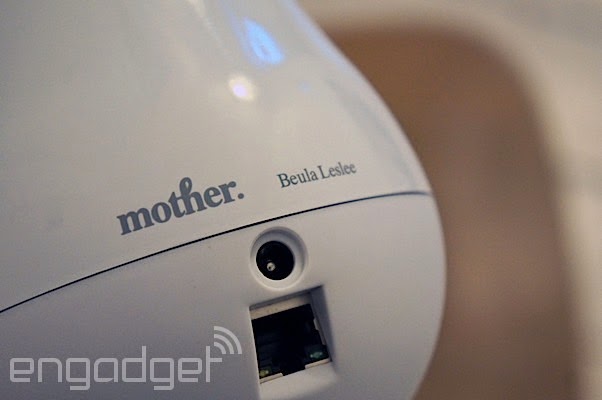Over the last few weeks, every person who has come into my home has gone through the same sort of rough conversation.
"What's that?"
"It's a new device that I'm testing. Do you like it?"
"Not really, it's a bit creepy."
This, then, is what happens when you live with Mother, which has finally begun to ship after getting so much attention when it launched in January. In essence, it's a device that's designed to connect the ordinary parts of your home to the internet, but is that something you really need?
Before we get to that, however, I feel like I should deliver a potted history about its creator before I talk about Mother itself. You see, the product is the brainchild of Rafi Haladjian, a serial entrepreneur who founded one of France's earliest ISPs before going on to build the Nabaztag. The device was a short, white plastic rabbit that could send and receive MP3s, deliver the weather forecast, stock reports, RSS feeds, e-mail alerts or act as an alarm clock. Additionally, the device was a "platform," enabling others with programming chops the freedom to create separate applications for the unit. In short, it was one of the first Internet of Things devices, before we had any idea what that term really meant.
I always imagined that Nabaztag was the sort of device you'd find adorning department store catalogs and design magazines, but very few people actually buying one. That was borne out, too, since the company went bust in 2009 and, after being bought out by Mindscape, the product was essentially killed off in 2011, although it was later resurrected as the Karotz. I think the biggest problem with the gear was that it had a nice concept and could do could do lots of things, but didn't have a unique selling people that would enable the concept to take root in someone's mind. Sure, there are plenty of gadgets that do multiple things at once, but normally you buy a device to do a job, and everything else is gravy. For instance, Roku may be a smart TV platform and offer motion gaming, but I bet most people buy it as a Netflix box and discover its broader functionality from there.
I mention this because Mother is, just like Nabaztag, an internet-connected hub for the devices in your home. This time around, the box comes with a quartet of little plastic sensors, called Cookies, that use low-power radio to push information back to Mother, which then relays that data to the internet. The Cookies contain a 3-axis accelerometer and a thermometer, which you can then use to make "dumb" objects smart.
So, for example, if you taped a Cookie to your front door, you'd get a smartphone notification telling you every time it was opened. If you had small children, you could attach a sensor to a cupboard where you keep cleaning chemicals so that you'll know if the rugrats are trying to drink your bleach. You can even stick a Cookie to everyone's toothbrush, so everyone in the house can participate in a competitive tooth-brushing league, or to remind you to take your pills, track your sleep or even use one as a rudimentary pedometer. In essence, the hardware's potential uses, the limits of which are mostly governed by your imagination.
In conclusion then, there's nothing wrong with Mother, and I wish it all the best. I do think, however, that it's a nice idea, brilliantly executed, that runs out of steam before you're even out of the store. Imagine it, once the salesperson has told you the trick about the bleach cupboard, you start to wonder what, if any other applications you could use this for - and come up short. I have nothing but good things to say about this device, but I really don't think anyone should be buying one until it solves the fundamental questions at its heart. - engadget


No comments:
Post a Comment